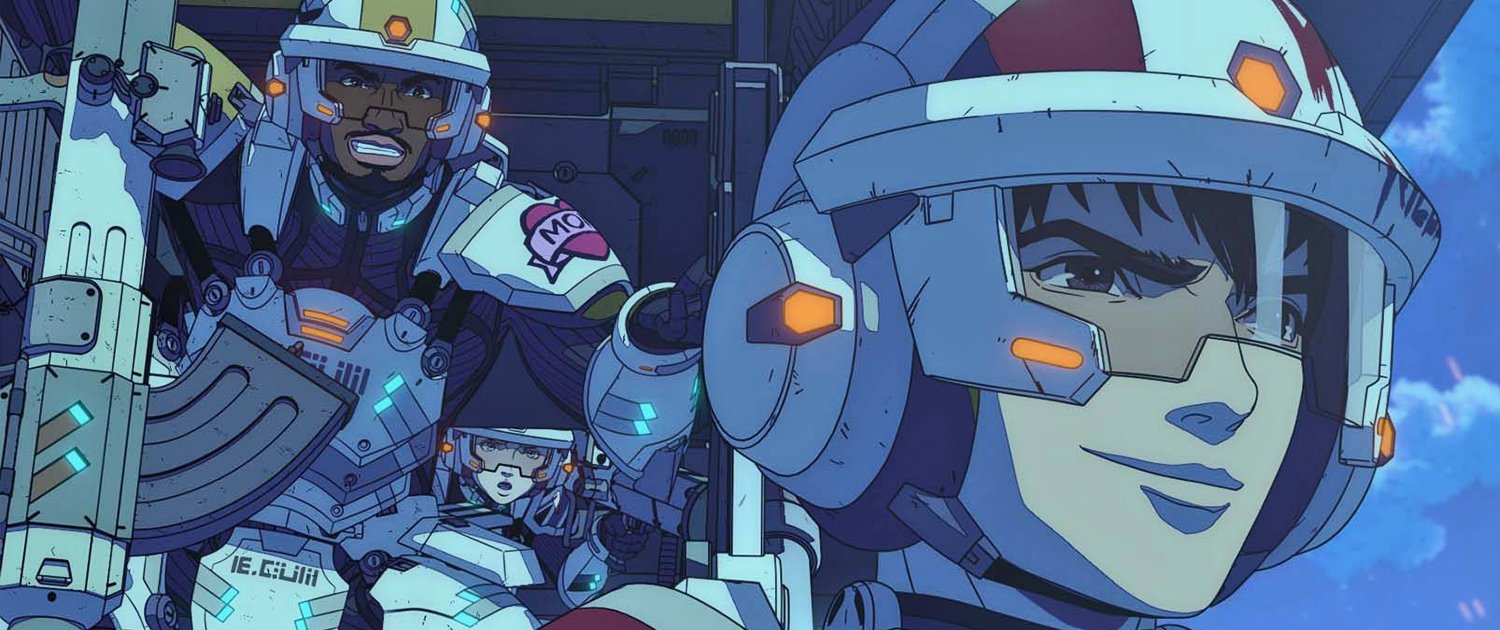Why can’t I stop watching Yakitori? A review of Netflix’s latest anime series.
Bare bones, shallow, but ravenously good.
We don’t talk enough about excellent 3D animation. Maybe it’s an uncanny valley thing or perhaps it’s just because we’ve mistakenly come to believe that 3D anime is just “lazy”, as though instead of painstakingly and lovingly crafting a piece of visual art 3D animators just fire up ChatGPT, hit the “Automate anime” button and recline back in their chairs sipping brandy while congratulating themselves on a job well done.
Either way it can’t be ignored that some absolutely killer 3D animated movies and television series’ are often passed over unceremoniously; Ajin, Knights of Sidonia, Blame! It’s actually a little baffling.
Netflix’s latest 3D anime gamble, Yakitori: Soldiers of misfortune will be a great litmus test for this seemingly never ending debate. Now before we bemoan Netflix’s decision to make another 3D anime and before we start sticking pins in the Netflix Godzilla voodoo dolls we have on our black altars, I want to let it be known right here and now that Yakitori will 100%, absolutely blow your socks off.
Don’t let the name fool you – likely when reading the name Yakitori: Soldiers of misfortune for the first time your mind instantly goes to something silly and cheeful like Space Dandy, or Tiger Bunny. However as we will learn in the series the name Yakitori has deeper and slightly more depressing connotations. Set in a future timeline where the Earth has joined a coalition of other planets and species called the Trade Federation (George Lucas’ lawyers are already on the phone, roger roger), young people with uncertain futures or limited job prospects are given the opportunity to join the Trade Federation’s human infantry mercenary program.
With a 70% casualty rate the human mercenaries are sheepishly labelled as Yakitori, i.e. fresh chickens ready for the grill.
In truth Yakitori feels more reminiscent of Kubrick’s Full Metal Jacket than other ‘team building’ anime like Fire Force or Patlabor; we follow the exploits of protagonist Akira and Unit K321, the latest batch of new recruits ready for the meat grinder, as they depart on their first mission to a hostile alien world.
We’re guided through a very simplistic story, probably one that we’ve seen a million times already; here are the team, here is their training and here is their first mission. An absolute plethora of Hollywood movies have exploited this overused trope, but it takes something special like Top Gun or Stripes to find new and interesting ways to chew it up, digest it and spit it back into the audience’s face. I honestly think Yakitori’s unique universe is definitely that something special we’re alluding to.
What I love most of all about this series was the masterful decision to leave unnecessary exposition by the wayside – the character development is enough for the audience to know who each member of unit K321 is as a soldier and not much more. This is Kelly’s Heroes, it’s Heartbreak Ridge, it’s not a shonen story that attempts to weigh the audience down with deep exposition and backstory. We glimpse enough of the character’s lives for us to know how they arrived in their predicament and we delve deep enough into their past only shallow enough to know how our heroes are going to get out of their current situation.
It’s refreshing storytelling. It means the audience is only present in the here and now and we only have to be sidelined from the action for only a few minutes and not an entire episode. As a result, as you get to the end of the shockingly short 6-episode span, you won’t see the obligatory anime beach episode, or the much maligned anime party episode where the main characters take the time to plan a pissweak surprise party with cake and soda pop because they “really need to blow off some steam”.
The only steam unit K321 are going to be blowing off is the residual blowback steam that comes off a rocket launcher or entrenched mortar.
We’re also presented with some very likeable and rather affable main characters – keeping in tradition with any military themed anime each of them are clearly defined with unique personalities, pithy nicknames and an assortment of heavy weaponry. In all they feel like a real unit, they argue and disagree, but in the end they understand the value of cohesion and unity. The tension between them comes from attempting to overcome the ever changing conditions on the battlefield, not from a completely made up attempt to crowbar drama into pivotal scenes through the crude use of teenage angst or romance.
These characters also seem grounded in reality. There are no smirking mega-chad killers here, no unstoppable death machines in long flowing capes with swords the size of an elephant’s sex toy whirling scimitars over their heads with skillful ease. Unit K321 are scared, they duck and weave gunfire like real, actual people and shriek loudly at every explosion, knowing full well it could mark the end of their journey.
The ever present threat of death or disfigurement from being a Yakitori is real and is palpable.
We also don’t take enough about the benefits of 3D animation; the camera is constantly moving in Yakitori and it feels as though each episode actually has a director. Every episode has hyper-stylised flair and we are treated to, as a regular occurrence, the kind of camera direction that is normally reserved for big budget anime movies about Eva’s and magic girl stories with weathering in the title.
The producers Studio ARECT know perfectly well the benefits of working with 3D models instead of traditional flat 2D/3D hybrid animation – 3D allows them to pivot the action the way they want it, to do the kind of animation they needed to fulfil their vision would probably cost the same as the GDP of a tiny European nation in terms of money and time.
In all, think of Yakitori as less of a traditional anime and more like an extension of a more established sci-fi franchise like Halo: ODST. That is, it’s something that is set in a larger universe with a bible-sized codex of myth and lore, focussing specifically on the lives of a very few select individuals. Yakitori’s small scope in a gigantic galactic sandbox makes it incredibly endearing and wonderfully human.
Plus, standing at only six episodes the time investment required to indulge in the world of Unit K321 is minimal.
The Tokyo 5 rates this series 8.5 out of 10.
~ Andrew Archer

